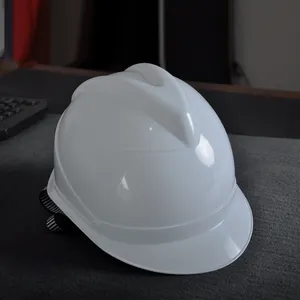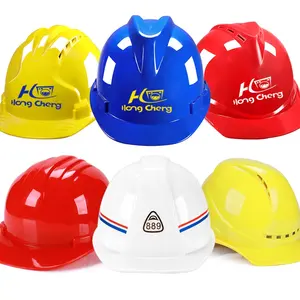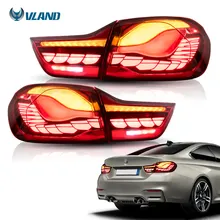A polymer helmet is a specialized form of protective headgear made from high-strength polymer materials such as PC (Polycarbonate) and PP (Polypropylene). These helmets are designed to offer robust protection in various environments, ranging from industrial settings to tactical operations. The inherent properties of polymers, including their lightweight and impact resistance, make them ideal for crafting helmets that provide safety without compromising on comfort or mobility.
Types and Characteristics of Polymer Helmets
There are several types of polymer helmets, each with unique characteristics designed to meet specific needs. For instance, the tactical helmets often have integrated mounting systems for night vision and communication devices, catering to military and law enforcement applications. Industrial helmets might focus more on the visor's clarity and resistance to chemicals. Sports helmets are designed with aerodynamics and breathability in mind, providing both protection and performance enhancements. Each type undergoes rigorous testing to ensure it meets the safety standards required for its intended use, with variations in shell thickness, interior padding, and strap configurations to optimize for different scenarios.
Structure and Physical Components of Polymer Helmets
The structure of a polymer helmet is a complex assembly of multiple components. The outer shell, typically made from polycarbonate, is the first line of defense, designed to absorb and distribute impact. Beneath this shell lies a layer of dense foam, often polypropylene, which further absorbs shock. The interior lining includes padding for comfort and fit, while adjustable straps ensure the helmet remains secure. Ventilation systems are strategically placed to provide airflow, reducing heat and moisture buildup. Some models also include a ratcheting system for quick and precise size adjustments, ensuring a snug fit for various head sizes.
Materials and Their Properties
Polycarbonate (PC) and Polypropylene (PP) are chosen for polymer helmets due to their outstanding properties. PC offers transparency, which is essential for visors, and has an exceptional ability to absorb and resist impact without cracking. PP, known for its flexibility, adds to the helmet's ability to withstand deformation and provides resistance to a wide range of chemicals. These materials are also resistant to temperature variations, ensuring the helmet's performance in different climates. Their lightweight nature contributes to the portability of the helmet, making it an ideal choice for active users who require protection without the burden of heavy gear.
Business Usages and Applications
Polymer helmets are indispensable in various business settings. In construction, they protect workers from head injuries due to falling debris. For law enforcement, they provide ballistic protection during tactical operations. In the sports industry, these helmets are crucial for ensuring athlete safety in high-impact sports like cycling or skateboarding. The use of polymer helmets has significantly reduced workplace injuries and fatalities, demonstrating their value in protecting human capital. Businesses also appreciate the helmets' durability, which translates to cost savings through reduced replacement frequency.
Functions and Tasks Performed
The primary function of a polymer helmet is to protect the wearer's head from impact and penetration injuries. However, they also serve secondary functions such as shielding the eyes from bright lights or sparks, providing a platform for mounting equipment like headlamps or cameras, and even offering some level of protection from electrical hazards. The versatility of these helmets is evident in their ability to adapt to different tasks, whether it's a construction worker needing a headlamp for visibility or a soldier attaching night vision goggles for a night operation.
Distinctive Features and Capabilities
What sets polymer helmets apart from competitors are features like their modular design, which allows for the addition or removal of components such as visors, neck guards, and communication systems. The use of advanced polymers also means these helmets can be produced in a wide range of colors and patterns, which is important for units that require quick visual identification. Moreover, the integration of modern technologies like GPS tracking or biometric sensors is becoming more common, enhancing the functionality of these helmets beyond traditional expectations.
Benefits and Positive Outcomes
The benefits of polymer helmets extend beyond mere protection. They contribute to the wearer's comfort and can improve performance by not being a distraction or a burden. For businesses, the use of polymer helmets can mean fewer days lost to injury, improved employee morale, and compliance with safety regulations. For the individual user, the helmets can provide peace of mind, knowing they are well-protected, which allows them to focus on the task at hand.
How to Use and Operate Effectively
Effective use of a polymer helmet involves proper fitting and adjustment. The helmet should sit level on the head and should not rock back and forth. The chin strap must be secured so that the helmet doesn't come off upon impact. For helmets with additional components, users should familiarize themselves with how to attach and detach these parts quickly and securely. In tactical situations, understanding how to integrate communication devices and other equipment is crucial for operational effectiveness.
How to Choose the Right Model
Selecting the right polymer helmet requires an understanding of the specific needs of the user. Factors such as the level of protection required, the environment it will be used in, and any additional equipment that needs to be integrated should be considered. It's also important to try on different sizes and models to find the best fit, as a helmet that is too loose or too tight can be ineffective or even dangerous.
Guidelines for Cleaning and Maintenance
Cleaning a polymer helmet typically involves wiping the exterior with a mild soap solution and rinsing with clean water. The interior padding can often be removed and washed separately to maintain hygiene. Regular inspections for cracks or structural damage are vital, especially after the helmet has sustained an impact. If damage is found, the helmet should be replaced immediately. Proper storage away from direct sunlight and chemicals is also important to maintain the integrity of the materials.
Installation of Additional Components
Installing additional components on a polymer helmet should be done following the manufacturer's instructions. Most helmets are designed with mounting points for accessories, and using the correct mounting hardware is essential for ensuring that these components stay secure. For example, installing a night vision mount requires careful alignment and tightening to ensure the device remains stable during movement.
Target Audience and Meeting Needs
The target audience for polymer helmets is broad, encompassing anyone who requires head protection as part of their occupation or recreational activities. This includes construction workers, tactical personnel, athletes, and more. The design of these helmets takes into account the various needs and preferences of these groups, such as the need for lightweight protection in sports or the integration of communication devices for tactical operations. By understanding the demands of each sector, manufacturers can tailor their helmets to meet the specific requirements of their users.









































 浙公网安备 33010002000092号
浙公网安备 33010002000092号 浙B2-20120091-4
浙B2-20120091-4